#absolute top-tier gameplay and commentary
Photo

For anybody interested in watching a Rimworld playthrough, I cannot recommend Pete Complete’s Ideology Playthrough enough (his Ice Sheet and Royalty playthroughs were also excellent). His presentation is engaging and professional, and I eagerly anticipate every new episode.
In recent episodes, a new character named Light has joined the colony. He’s an abrasive, psychically hypersensitive psychopath with godlike psycast abilities. His shenanigans delighted me, so I decided to draw him.
#pete complete#rimworld#art#my art#traditional art#fanart#rimworld art#I wish I was as good at Rimworld as Pete is#I have almost 800 hours in this game#and I still learn more from Pete's videos than I ever do in-game#Please check his videos out if you're interested#absolute top-tier gameplay and commentary#tw eye gore#tw eye stuff#how do I tag for eye stuff if he has no eyes :/#have a nice day y'all
6 notes
·
View notes
Text
Gladiators 2024: The Review

Gladiators 2024 is in the books, and we have our first champions in 15 years! The new series started with high ratings and has continued to deliver throughout its 11 episode run, capturing the imagination of the general public so strongly that a second series has already been commissioned by the BBC.
Now that it's all over, I think it's fair to say that the show has been a creative triumph as well as a ratings hit, running much closer to the glory days of the 1990s ITV run than the disappointing 2008-09 Sky One revival. While it's fresh in the mind, it's a good time to take a look at what the show did right, as well as identifying any weaknesses that can be improved next time around.
The Good
First off, I think the overall look of the show is fantastic. One of the biggest weaknesses of the Sky show was the small studio setting, and thankfully Sheffield Arena gives the feeling of a big time event that Birmingham's National Indoor Arena did back in the day. The set retains plenty of elements of the 90s presentation, like the padded silver platform edges and the big imposing backdrop of The Wall, but with great modern touches like additional projection. I never hated the water element of the Sky show but I don't miss it, and the added pyrotechnics are a nice touch. I can't think of anything I'd change, except for maybe a move to a bigger arena – more on why later.
The presenter duo of Bradley and Barney Walsh have been somewhat divisive among fans, and there are definitely criticisms to be made. Having said that, it's clear that they're excited to be involved and I think that they're both totally fine on interviews, with Bradley's natural charisma and rapport coming through well. Guy Mowbray has been good value on commentary too.
The on-screen graphics all look very nice, and the introductory video packages and recaps of previous shows are a nice way to get to know the contenders. Likewise, the Gladiator intros are useful in familiarising the audience with the new cast, although it's very clear that they've been reused from episode to episode. I also really liked the touch of having all of the Gladiators welcoming the contenders into the final.
The selection of events was pretty much dead on – all of the returning games were top tier choices from the classic series, though they weren't all handled correctly. I think all three new events are worthwhile additions to the roster, with The Edge being the highlight and really the signature game for the modern show. I wasn't sure about it at first because the initial contenders were quite tentative, but once they started to sprint across, I was hooked. The scoring was initially too generous, but the revision to the rules in the semi-finals was perfect.

The Ring is very simple, but I can understand the need for that from a TV production perspective – you do need some low-setup, low-tech events to balance out the more elaborate events. Thankfully it is also very hard-hitting, so it's quite entertaining to watch. As for Collision, some people prefer Hit & Run but I actually prefer the new event, thanks to the greater visual involvement of the Gladiators. The need to carry the ball to score also adds an extra wrinkle to the whole thing.
I think the Gladiators this year mostly did a fantastic job in terms of both gameplay and establishing themselves as personalities. For me, there are a few standouts. Nitro is an absolute all-star – he's very charismatic and he seems to be an incredible all-rounder on the events. Legend's heel schtick is highly entertaining, with “There's no I in team, but there are five I's in individual brilliance” being my favourite line of the entire series. I've become a big fan of Fury – she's relentless whether she's on The Ring, The Edge or Powerball, and has a strong sense of fair play. Dynamite's performances stand out as being particularly impressive given that she's not the biggest of the group.
The standard of the contenders was also very high this year. I couldn't pick between Marie-Louise and Bronte for the women's final, and while I did predict the winner of the men's final, it was closer than I was expecting. There were some absolutely cracking close Eliminators along the way, and very few major mismatches. In most cases, even the lowest-scoring contenders managed to pick up points in the majority of their events.
The Bad
I really hate to say this as I'm a huge fan of Bradley Walsh's work on The Chase, but as good as he and Barney are on interviews, their scripted links have been arguably the weakest aspect of the show. Event introductions have frequently made me cringe, with some lame jokes and banter that comes off as forced. They're so much better when they're just allowed to operate naturally, and I hope that if they return, they'll be given room to play things a bit more off-the-cuff.
One aspect of the presentation that winds me up is an occasional lack of information. The clock is displayed on screen for the full duration of every event except The Ring, during which the timer is only shown for the final ten seconds of the game. Why? That's admittedly a small peeve, but I have a far bigger one – the Eliminator times of runners-up determine progression to the quarter-final and semi-final rounds, but we're never shown them. Since this information is so important, it's really frustrating that we never get to see those times, either via a clock running during the event or a leaderboard at the end of the show.
Of course, that only matters because the structure of the competition was a bit unusual – a factor of the 11-week format. I've got to be honest, as good as the action was, I'm not entirely sold on a tournament format that lets you theoretically lose two episodes in a row and still end up in the semi-finals. Also, the criteria for choosing replacement contenders in the case of injury was not especially transparent – lots of people were confused by the addition of Wesley as a brand new contender in the Quarter-Finals, and it's not entirely clear why Matt was brought back from the heats to replace Chung. Hopefully, next time will have more episodes and a simpler single-elimination tournament structure.
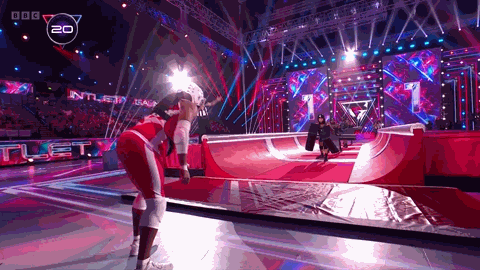
Before the series, I never thought that my criticisms of the events would be about the classics. However, Hang Tough was only featured on three episodes – a crazy low number for one of the most iconic events from the original show. I understand it's because The Edge and Hang Tough can't be set up during the same taping, and I get the need to establish the new event, but let's have a better balance the next time. As for Gauntlet, every single woman scored maximum points and most of the men did too – it's just too easy in its current form. I feel like there's no good reason no to revert to the 1994 rules, with five Gladiators, a 30-second time limit and time-based scoring.
I don't think any of the Gladiators were bad value, and I actually believe that people have been rather unfair to Viper in particular – he's been widely criticised for his performance in events, but in reality his performance has been similar to Wolf's contributions in the original run. The problem is that his villain character isn't quite connecting, and I hope he's allowed to show more personality than “silent and grumpy” if he returns. It's also sad to see that Athena has been given very few one-on-one events and very little interview time, so I hope she gets more focus if she comes back.
Further thoughts
Ulrika Jonsson has complained about the loss of the cheerleaders from the ITV show. I don't particularly miss them, but I suppose it wouldn't hurt to have them? Also, I'm a huge fan of the event music from the ITV version of the show, and not having such prominent tunes did bug me at first. However, over the course of the series I did become used to it and it's not something I'd look to change now.
Jet has mentioned that she and other past Gladiators would have liked to have been involved in the show, providing colour commentary or some sort of insight. This may be controversial, but I actually think that not including them was the right choice for the first series. The problem with bringing the old favourites back from the start is that you immediately run the risk of overshadowing the new cast, as well as pigeonholing the show as nothing more than a nostalgic product – something I think the show has very successfully avoided, as it's hugely popular with both kids and adults.
Having said that, I do think that bringing them in for a second series would be a good move now that the new cast is established. If the production team can bring back additional classic events, the veterans can speak with authority about what it's like to play them, and young fans can get a glimpse of the people their parents keep mentioning. What's more, if someone like Jet were to come back, it would be nice to have a woman as part of the presenting team, as was the case in the ITV and Sky versions of the show.

I have no doubts over the professionalism of everybody involved in the health and safety aspects of the show, and it was good to see stoppages and such when needed. However, I was quite surprised by the number of equipment malfunctions – lost shoes on The Wall, helmets coming off, all that stuff. There were also plenty of injuries – Comet, Sabre, Finley, Dev, Chung, even Finlay forfeited an event due to being banged up. It's obviously a high-impact show, but hopefully the next series won't be quite like this.
Although the arena used was good for the show, I feel like it may benefit from a move to a bigger venue for the next series. Public interest is sufficiently high I don't think you'd have trouble filling out the seats, and it would give the benefit of increasing the space available for the events - especially if a third event requiring ceiling space is added, since The Edge and Hang Tough should both be prominent.
Wishlist for next series
Three new events, two returning/revised and one new (return preferences: Skytrak, Atlaspheres and Danger Zone)
Gauntlet rules revised
Two to four additional Gladiators
Better utilisation of Viper and Athena
More episodes with a simplified tournament format
More transparency about the competitive aspects of the show
Presenters given either less scripting or better scripting
Fewer injuries!
Final thoughts
As a huge fan of Gladiators since the very first series, I was really apprehensive about the show returning. Would it live up to my expectations? The Sky show never managed to match the ITV run for me, even though I had the good fortune to attend a taping for the second series. Would it hit with the public? I've watched enough worthwhile retro revivals fall flat to know that it was by no means guaranteed.
The new series has exceeded my expectations - I genuinely didn't think it'd be pulled off this well, and I'm so happy the show has been given the revival it deserves. Overall I think the entire team has done a fantastic job, and hopefully it's clear that the criticisms that I've made come don't come from a desire to knock their hard work, but are provided with the most constructive intent. The show was great this year, and I'm confident that a few tweaks will make it even better next time around.
Hope you enjoyed this review - let me know your thoughts, and I'll be back soon with some statistical analysis for the series.
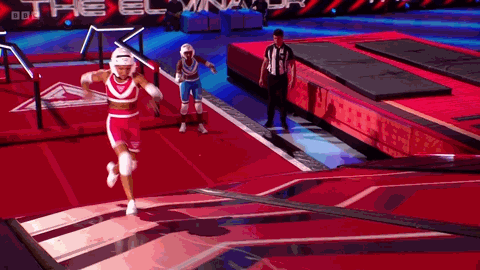
5 notes
·
View notes
Text
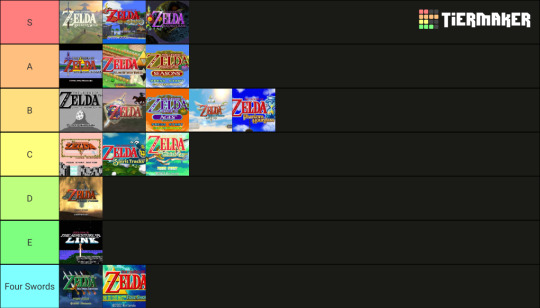
In anticipation of the release of Tears of the Kingdom, here's my own personal ranking of all the mainline Zelda games. Explanation of the tiers (and some additional commentary) :
S tier: My absolute top faves!!!!!!!! Fully anticipating TotK to achieve this rank.
A tier: I really love these games!! Oracle of Seasons places here over Ages partially for nostalgia reasons: I owned Seasons as a kid and played it a lot but didn't play Ages until I was an adult.
B tier: I like them a lot! Fun fact: Ocarina of Time was my first Zelda game I actually owned. While I do have a fair bit of nostalgia for it...I don't think it's necessarily that amazing.
C tier: They're alright. Solid Zelda games, but definitely not among my favorites. I feel like putting Spirit Tracks below Phantom Hourglass is a bit of a hot take, but my reasons are 1) I enjoyed directing Linebeck's ship more than driving the train and 2) the sections where you have to play the Spirit Pipes (I think that's what the instrument was called) were so thoroughly unenjoyable that it diminishes my opinion of the game.
D tier: Still mostly ok, but I have some complaints. I strongly dislike a lot of Twilight Princess's art direction, and Hyrule Field is definitely underwhelming once you get past its size. The gameplay is otherwise fine and Midna almost singlehandedly redeems the game...but not quite enough to bump it up a tier
E tier: Actively dislike these ones. Triforce Heroes should be at this tier, but the person who made this template left it out for some reason. I really wanted to like Triforce Heroes...but I didn't have two friends to play multiplayer with, and the single player mode is so bad that I can't forgive it.
Four Swords tier: LttP + Four Swords is here specifically to represent the Four Swords subgame. While I have technically played both Four Swords and Four Swords Adventure, I didn't really play either one for long and don't really feel qualified to rank them. They seem neat, and I enjoyed what little I played, but...I can't say much beyond that.
If I had to place the spinoffs in this tier list: Hyrule Warriors and Age of Calamity go in A tier, Link's Crossbow Training in C tier, and Cadence of Hyrule is put in the same tier as the Four Swords games: I played the demo and thought the concept was neat...but the demo told me that I probably wasn't going to enjoy the game so I never played more than that.
1 note
·
View note
Photo

a friend asked me to give a shot at doing an entry in this tier list they linked me to, of the video games inducted into the World Video Game Hall of Fame since 2015, and I opted to give it a shot!
My rankings are generally biased towards games I personally enjoy playing, though I will give some commentary on their historic relevance:
S-Rank
Super Mario Bros: The game that repopularized video games in the US, that arguably began the entire platforming video game genre and all its imitators and spin-offs, that spawned a new generation of video games after the Atari Crash in the US, and still a DAMN FUN game in its own right! I simply had to put this at the top ranking. After the disillusionment caused by Atari’s failures, this game brought home consoles back in a big way to the US.
World of Warcraft: Now, I’m not much for MMORPGs. Nevertheless, I’ve followed the lore and general information in the Warcraft setting for years now, and a couple years back, my brother asked me to play it with him. I had a ton of fun, honestly! Playing a goblin mage, I believe. WoW is notable for being THE MMORPG, and still going strong. Admittedly, nowadays many games do what it does better, and the time when it was dominant as THE single game to play is past, but it was still an enjoyable experience and I really have to like how sincere the game is about its aesthetics and campy vibe. Given that the entire setting is reputedly a reskin of a Warhammer Fantasy Battle video game that went south, it’s cheery and colorful, morally gray tone is... an interesting complication in its history. (Also, HORDE. I STAN THE HORDE VERY HARD.)
The Sims: A bit of history; I did not play this game as enthusiastically as a kid as my sister and mom did. We ALL spammed the hell out of the Rosebud cheat, though; not until recent times did I actually wind up playing the game properly, when the most recent iteration of the series was free for a while. My mom didn’t care to play the game, she just liked building houses. In any case, while my attention drifted from the game now and then, I always am fascinated by the actual gameplay of caring for your simulated humans, and the way you don’t actually control them directly. This sort of hands off experience is actually a bit similar to the ‘dungeon simulator’ genre, and while the game is notorious for enabling cruelty (something I never saw the appeal of!), it’s a surprisingly wholesome experience, and it can’t be understated how unique this gameplay was at the time.
Legend of Zelda: It’s actually rather interesting how different OG Zelda is from modern games. Not just the top down perspective (which DOES pop up, now and then); the game is non-linear and allows you to go to any dungeon at any point, completing the game at your leisure, and the story is extremely barebones compared to what we may be used to. It’s quite a far cry from the linear gameplay of gradually collecting tools and working through plots that the games are known for. Breath of the Wild is, in fact, a return to form rather than an upheaval of the formula. I’ll also admit that I have a lot of affection for the gameplay of this one, as well as Link To The Past.
Donkey Kong: When you’re talking old school, as far as what you might call the modern generation of games goes (which is to say, the games that resurged after the Atari Crash), it’s hard to go wrong with Donkey Kong. It’s certainly notable for being a weird stage in Mario’s character and something that is generally ignored; it’s just strange thinking that at one point he was supposed to be abusive towards a pet ape that went in an innocent, well-meaning rampage! Personally this one kind of breaks a mold for my S-class rankings because while I like this one fine, I don’t like it THAT much; i mostly played it in the DK 64 game, and found it very difficult and that’s stuck with me. Still, I place it here for its momentous position in placing Nintendo on the map, with the influence and revolutionary technologies and gaming mechanics they would introduce, to this very day.
Pokemon Red/Blue: Hoo boy. HOO BOY it is honestly something of an oversight that I didn't immediately shove this beauty straight to the front of the S-line because good god I love this game. It's been years and years, long since I was but a whee Johnny playing a strange new game for the first time just because there was a cool turtle creature on the cover (because I was super into turtles back then), and I still love this game. Even with the improvements made to the formula since then (getting rid of HMs, the fixes and new types introduced since) there's still something lovable about this game, even as something as basic as the official artwork that just tugs my heartstrings. This game is highly notable for being an RPG that popularized the monster collecting/befriending gameplay (so far as I know), and as an autistic person, i really appreciate knowing the whole thing grew out of an autistic man's bug collection hobby from when he was a child. Pokemon is an absolute juggernaut of a media influence, and THIS is where it all began. It's first stage evolution, you might say. And not like a Magikarp or anything. This one's more like one of the starters... appropriately enough.
Final Fantasy 7: This is probably a bit of a controversial take, but FF7 was not actually one of my favorite Final Fantasy entries back in the day. I never played much more of it than the beginning missions, as my cousin owned the machine in question, and I moved out before i could play it much. Final Fantasy 3 (in the US; it's more generally referred to as 6 now) was my favorite for a long, long time, and that game pioneered many of the traits that would be associated with 7: the epic story, the complex ensemble cast, though 7 really expanded on that basic idea, and previous games were hardly shabby in that regard. 9 is my favorite of the pre-10 era, with its extreme shake ups to the mechanics of the game. No; what makes 7 stand out is that it was a shift towards making Final Fantasy a constantly shifting, unique franchise where every entry was its own thing; it introduced 3D graphics with a fun and cartoony style mixed with a story that wouldn't be out of place in a cyberpunk story, and heralds Squaresoft (as it was called at the time) splitting off from Nintendo, with its censorship policies, and doing its own thing with Sony, with a great deal more freedom to write as they pleased. The party design also stands out, which each character having their own unique function in the party while the Materia concept allows a degree of modular skills to be installed, customizing them in ways that, in my opinion, the best entries in the franchise (on a gameplay level) would revisit.
Colossal Cave Adventure: I'll be honest; I never played this game, and I don't believe it's particularly familiar to me at all. However, I chose it for this vaunted spot in S-rank because games of this nature, of text-based prompt and responses, are some of the most interesting things imaginable! Games like AI Dungeon are similar in some respects, and its impressive to think just how dang old this game is, and yet it managed to pull off basically being it's own DM. It has an interesting history; created by a man who worked on the precursor to the Internet, the game was made to connect with his daughter and was inspired by recent entries into Dungeons And Dragons, and later expanded upon by other programmers. It's notable that while Zork is the sort of game that would probably involve more immediate recognition (I actually mistook it for Zork at first, from the screenshot), this game was the first of its kind, and that always deserve some recognition.
Minecraft: I absolutely LOVE Minecraft, and it's rightfully one of the most popular games, if not THE most popular game, of the last couple of decades, and it's interesting to think just how unconventional it is; the game is, effectively, a LEGO simulator, and as someone who honestly always wanted tons of LEGO sets as a kid but could never afford them consistently, there's something genuinely very appealing about Minecraft's basic set up. It's open approach and lack of a goal, just gameplay mechanics that encourage you to build and do as you please, makes for a very relaxing and unusual mentality not often seen in games until this point; it doesn't even have a storyline, it simply gives you a world to play around in. Of note, Minecraft's entry seems to have relevance towards video games becoming a cultural touchstone; Minecraft's visual aesthetic leans towards both blocky LEGOs and retro graphics, and certainly proves that games don't need to strive for hyper realistic graphics to be appealing.
-----
A RANK
Doom: I genuinely like Doom, a lot! I still have memories of replaying this game frequently, long before Doom 2016 and Eternal were glimmers; it's just genuinely very fun to play. That said, I feel that there's other games that are a bit more historically notable and while i like this game, not quite as much as other entries. But it cant be understated that this was THE first person shooter, and more to the point, was fundamental towards game design as we know it. Of note, it pioneered the idea of a game engine, which has had tremendous impact down the road in terms of making a flexible baseline system that latergames were programmed around. Additionally, the first three episodes being free, with the additional ones being purchased as part of the full game, this was, I think, the first demonstration of a demo. Back then, we called this shareware; a game which was free but had full features locked off, but otherwise you could play it however much you wanted. There's a REASON Doom winds up on more systems than Skyrim! Ultimately, while it's not one of my favorite games, it's impact on the business of gaming and the functions of game design cannot be overstated.
Pac-Man: This game, is THE game that made video games a phenomenon and its worth thinking about that and how video games as a modern institituion can be drawn, however broadly, from Pac-Man's commercial success. I should note that while I've played this game extensively, it's not something I'm particularly good at; there's a LOT going on here and its a bit much for me to handle. That's probably a strength; there's a reason people had to fake their accomplishments and falsified high scores. It's worth noting that Pac-Man is a unique thing in that it has been rereleased many times over, and every generation has found it enjoyable and fun, unlike other games that set trends only to be lost out in the end. (Goldeneye, for instance!)
The Oregon Trail: Like many other people I assume, I first played this game as something available on school computers. Purportedly made as an educational game to teach students about history, this game may be notable for, among other things, being an entry point towards the idea of resource management in video games (as well as being hellishly difficult, by the standards then, but that DOES illustrate a point, does it not?). It's also the oldest, most continuously available game ever made, even now being ported to smartphones, or so I hear! It seems to be a very early example of edutainment games, and a genuinely great one at that. It probably helps that a selling point is that it doesn't really mince around with its subject matter; anyone who's played this game knows that total party kill is the default assumption, as it was in life.
Street Fighter and Mortal Kombat: I place these two together as I feel that they form a duo of sorts, and defined fighting games of my childhood and modern gaming experience; name a fighting game, from Injustice to something as deliberately different as Smash Bros, and it has SOME relation to these games, even if its in terms of doing something completely different. These games set a mold for fighting games! Among other things, both games feature iconic characters as a selling point, and to this day fighting games make their mark based on how signature their characters are. Mortal Kombat is of course an incredibly violent game (though very tame, by modern standards), and its fatalities and depicitons of violence sparked thought and arguments on what video games ought to be allowed to depict, for better or for worse. It's not implausible to suggest that the overly strict restrictions on what video games could depict go back to Mortal Kombat's fatalities, specifically (since there's far worse games predating it, though too graphically primitive to be obvious). Street Fighter, conversely, strikes me as having more characterization and depth, especially as far as fighting systems go; I find it hard to be interested in many fighting games now, if they don't offer as much depth as the likes of Street Fighter 2. Street Fighter stands out for innovating multiplayer play, initially in the arcade, and its not implausible to say that the likes of Smash Bros is a descendant of sorts of the specific mentality Street Fighter brought to the table. Consider also that it is STILL a mainstay in the remaining arcades and cabinets in service today!
Tomb Raider: This is a game i legit liked back in the day, and there's some part of me that's sad that the platforming, puzzle solving and focus on exploration has not really made it back into the modern Tomb Raider series, last I checked. There's probably something interesting in that Lara Croft represents a bit of an intermediate period between platforming mascots and modern Edgy Protagonists; you know the ones. Balding white dudes with vague dad vibes, but this is not a slight on Lara; she definitely has a ton of personality, even just at a cover glance. This game had a strong focus on exploration, and that's honestly something I really like.
Super Mario Kart: I'm going to be controversial here; complaints about the Blue Shell are kinda overrated. It's not that different from, say, a red shell hitting you from behind when you're close to the finish line. But, jokes and old 90s memes aside, this game has some interesting status in that it started the idea of making spin-off games in dramatically different contexts; Crash Team Racing and Sonic Drift, for example, are listened as similar games. On a franchise level, this began the trend of Mario becoming a truly flexible character who could do pretty much whatever was required of him, not just the original platforming games, and its possible his imitators never quite learned the same lesson. Though one wonders what Miyamoto might have thought if he'd known how many thinkpieces he would spawn with 'why does mario go-karting with Bowser when they're enemies?'. For my part, I favor the idea that the other games are in-universe fictions they're actors on and this is their actual dynamic, or that Mario is a relaxed dude who doesn't mind playing kart games with his foe. (I mean, he's not Ridley. Bowser's easy enough to get along with.)
Animal Crossing: Again, I have to emphasize that I've never actually played this game, at least on a consistent basis (and by that, I mean I MIGHT have played it on the Gamecube, once, in the early 2000s), and have to speak from what I've seen of what it sparked. And I really do like the way it really codified the sub-genre of relaxed, open-ended games where the player is free to do as they like, without much stress or fear, which is something I think more games could stand to do. On my personal list of features that my ideal video game would have, Animal Crossing would definitely offer a few ideas. I am reminded of farming simulators, such as Harvest Moon or Stardew Valley; while they are different beasts entirely, there's a familiar sense of non-combat relaxation that's pleasant to see.
Spacewar!: This machine is GODDAMN old, and like an old fogey predating modern humans, it deserves our respect. It's so old, it predates Pong. Supposedly created as part of predictative Cold War models, with an emphasis on emulating sci fi dogfights, producing a game that soon proved popular, for over a decade remainign the most popular game on computer systems, and a clumsy foray into arcade gaming (that didn't pan out, unfortunately) led to the creation of Pong by its creator, which is another story all its own! And Pong is directly responsible for the idea of the video game itself; this game launched the entire video game industry as we understand it! No small feat, indeed.
----
B RANKED
Sonic The Hedgehog: I must state that I DO like this game, though not as much as later entires like Sonic 3 and Knuckles, or the Sonic Adventure series; the fast paced action seems a bit hobbled by the traps and need to be careful of surroundings, which would seem to run counter towards the whole idea of GOTTA GO FAST, y'know? But the game presents an interesting viewpoint on the nature of mascot gaming; created specifically, so it is said, as a rival to Mario, Sonic was designed as a mascot with attitude, and inspired a host of imitators; he's probably the only one to escape the 90s more or less intact, and this may have something to say about his flexibility, star power, and also the fact that he's a pretty mild character, all things considered. This game certainly has its place in gaming history, giving an important place in the console wars of yesteryear. Believe me, I was a kid in the 90s, Sonic was a HUGE deal.
Space Invaders: This game is noted to have catapulted games into prominence by making them household, something outside of arcades, and it shows! An interesting detail of note is that supposedly, the Space Invaders were meant to all move at high speed, but this was either too hard to play against, or too costly on the processor; it was found that by making them speed up as they were defeated, it created an interesting set of challenge. You have to appreciate game history like that. In general, its success prompted Japanese companies to join the market, which would eventually produce what I imagine was a thriving, competitive market that would eventually get us Nintendo and it's own gamechangers down the road.
Grant Theft Auto 3: I'm going to be honest with you. I don't much care for this sort of game. The Saints Row series, with its fundamental wackiness, is the kind of game I really DO like if I'm going for something like this, and GTA sort of leaning towards the 'cruel for fun and profit' gameplay is really unappealing for me. However, I'd be remiss if I didn't address this game, and what seems to come up is two things: the game's sheer freedom in its open world (which certainly pushed the bar for games of that nature, and has made it a byword for gamers screwing around in a game just to see what ridiculous things they could or couldn't do) and the infamous reputation from the mature aspects of the game. Personally, I'm not much for this game's take on maturity (if I wanted to discuss a game of that nature, I'd suggest, say, Spec Ops: The Line) but I really do appreciate what this game and its series did for the open world genre, and the sheer possibilities presented for letting you do what you wanted.
King's Quest: I've never played this game, but I am a HUGE fan of the point and click genre (also known generally as the adventure game genre) that it spawned; without this game, there's no Monkey Island, no Sam and Max, no The Dig or Full Throttle, or Gabriel Knight. This game was similar to previous text-based games, with a text parser to input commands, but with the distinction of a graphical interface to move their character around, which would be the seed of later games such as the SCUMM engine of Monkey Island and other Lucasarts games (which, to me, ARE Adventure Gaming). The puzzles, comedic sensibilities, and interface innovations originated with this game, and codified those later adventure games i love so much.
Starcraft: This is another one those list of 'games I should have already played by now'. I'm not much of an RTS person, barring forays with games such as Impossible Creatures, Warhammer 40k: Dawn of War, and more strange entries such as Brutal Legend, and I contend that the combat aspects of 4X games like Civilization DO count on some level; the specifics of troop movement and unit strengths/weaknesses are a bit beyond me, when you get to more complex stuff. Starcraft, reading between the lines, really introduced the idea of multiplayer culture especially for RTS, pioneered the Battle(dot)net system (which I mostly recall from Diablo, if I'm being honest!) as well as the idea of relative strengths and powers for individual factions so that they became characters in their own right. It's still a very popular online game, and that says SOMETHING. Also, I tend to use zerg rushes, so I would probably play Zerg. Probably.
(There is much speculation on whether or not, like Warcraft being a failed Warhammer Fantasy game, if the same holds true for Starcraft and Warhammer 40k. I lean on the side of 'probably not'; the differences are too notable. The Zerg and Tyranids have some similarties, but that's probably because they're based on the same broad hive mind evil insect aggressor trope, and they have enough differences from there to be very distinct from one another. It's not like how OG Warcraft's orcs were very obviously warhammer orcs with less football hooliganism.)
Bejeweled: This is a firm case of a game that I don't play, but I really have to respect its influence on gaming as a whole. Apparently it started as a match three-type game with a simplistic formula that proved wildly popular (perhaps making a point that simpler can be more effective, in game mechanics), with a truly explosive record of downloads; over 500 million, it seems. Thus its fair to say that this game set the precedent for casual games, which have become THE market. Regardless of your feelings on that genre, this one was a real game changer. (Pun intended, absolutely.)
----
C RANK
Pong: "By most measures of popular impact, Pong launched the video game industry." This line alone saws it all, I think. It wasn't the first video game, but it was one of the more early ones, and its the one that really made video games and consoles successful, gaining widespread attention from the mainstream audience, as well as getting Atari recognition (for better or for worse, but perhaps that was just a development of being on top, so to speak; maye the console wars at least kept the big three honest). It also started the arcade revolution of games, and this humble game is essentially responsible for the entire state of video games as a concept, as we know it today.
Halo: No disrespect to Halo, but it's just a game series I've never quite been able to get into. Those games are very hit and miss for me; games like Call of Duty, Battlefield, Gears of War and everything like that are just... hard for me to get into. It takes something specific like Borderlands or the Besthesda Fallout series, or something else, for me to get hooked, and Halo just doesn't do it for me! Nevertheless, I would be QUITE remiss if I simply dismissed it, and there's reasons for it to be inducted into the hall of fame barely three years into the hall of fame making inductees. Firstly, it was Microsoft's big entry into the console wars, and it must be said this was a MASSIVE upset and a completely unprecedented shift in the assumptions of the console wars back then; NO ONE expected microsoft to actually do this, let alone redefine gaming out of Sony and Nintendo's favor like that. At the time, PCs dominated FPS games, and Halo showed that consoles could do it just fine. It must also be said that it has a very intricate and complex system of lore, backstory and material that was quite distinctive for a new setting back in the day, and while I've seen people object to it's gameplay, I suspect that its with the benefit of hindsight; Halo offered an extremely unusual degree of freedom in achieving the goals set out for you. (Cortana also didn't deserve getting her name slapped onto that search assistant that eats up all your RAM.)
Where In The World Is Carmen San Diego: Surprisignly enough, based on the article, this game was NOT an adaptation, but the source material of this character. This is where the fancy, mystery lady in the red coat started! Evidently this game was originally an edutainment game with a cops and robbers theme, and inspired by Colossal Cave Adventure from higher up on the list, and one must appreciate the effort that went into it. This one is ranked low, mostly because it didn't seem TOO notable to me. Honestly I'm surprised this is where Carmen Sandiego started. (And that she doesn't get enough credit as an iconic theatrical villain who won't go a step too far, but that's another rant.)
-
D LIST
Here we are. The D LIST. The bottom of the sorting pile; the lowest of them all, the... well, the ones that I honestly don't necessarily dislike, but couldn't place higher for reasons of notability, personal interest, or perceived impact on the history of gaming.
John Madden Football: Sports games, as a whole, really do NOT do it for me. I don't like real like sports at ALL (with, as a kid, a brief interest in boxing and that was just because they had gloves like Knuckles from Sonic the Hedgehog) so its hard for me to say that I find the history of this one all that compelling. Even so, there's some interesting elements in how this game was a sequel to a previous failed attempt, with a bold new attempt at a more arcade-style action game with a more dramatic take on the players, who would in turn be rated in different skill sets. The Madden series is STILL going so... it worked out pretty well, I'd say.
(FUCKIN EA WAS BEHIND THIS ONE??? wow, EA is older than I thought.)
Microsoft Flight Simulator: It's honestly a bit painful sorting this one so low, since I had many happy times as a wee Johnny playing this game back in the old days. I mean the OLD, old days. This was like, the days when Usenet was the preferred way for people to talk online. (Not me, though. I didn't talk to people, then. I was even less social than I am now, which is saying something!) All the same, I suppose that it was important to not crowd too many entries in a specific folder, and statistically, something had to keep getting knocked down, and in the end, I couldn't honestly say I still enjoyed this one enough to place it higher. Still, credit must be given where it is due; this game stands out for being an early foray into simulator gaming, showing a realistic depiction of actual flight. It has apparently been updated and rereleased many times since, which is impressive!
Tetris: I like puzzles. So it might be surprising to hear this seminal game ranked so low; firstly, I like different KINDS of puzzles (like weird ones where you have to fling your sense of logic to the moon and back, or make use of gaming mechanics) and honestly this game is kind of stressful for me. You gotta keep an eye on a lot of different things flying around all at once, and constantly move things around, and that kind of attention and quick thinking does NOT come easily to me. All the same, I really have to admire how it was born from it's creator's pleasure in solving mathematical puzzles about sorting shapes into boxes, in a manner strangely remniscient of Satoshi's bug collecting that became Pokemon. Certainly the game's simplicity has proven a universally appealing thing, and may say something about the value of keeping it simple.
Microsoft Solitaire: This game apparently became pay-to-get some time ago in recent computer generations, and let me tell, you, it was genuinely depressing to find that out. I remember younger decades, from the 90s and on, when this game was a regular and free feature in Windows computers fir MANY years. You got a computer, this game was on here. I was a kid, and i remember watching my mom play this game and makign the cards go WHOOP WHOPP all over the place and marveling, because I couldn't ever do the same thing. (A related note: I am terrible at this game. Go figure!) Of note, this game was massively widespread, and just EVERYWHERE, and I think everyone who ever played a computer back in those days instantly remembers it in some way. It was just... ubiquitous.
Centipede: Oh, ol' Centipede. I don't mean to be mean to you. But between the likes of Pokemon and Super Mario Bros, even the arcade Donkey Kong, someone had to keep dropping down the leaderboard that is this tierlist, and unfortunately, there were other games that felt higher up than you. All the same, you're a very good game, and honestly, I like you more than some other games ranked higher for reasons of relevance to gaming history. Certainly more than anything else in D-listing. The colorful and appealing palette is noteworthy. That trackball controller! Amazing! (More games should use trackballs. They're fun and easy to use.) At the very least, Order of the Stick did a joke with you once, and that's better than anything I can do for you. All the same, you're a cool game.
5 notes
·
View notes
Text
Favourite Games of 2019
I don’t like making ranked lists anymore. So here’s a bunch of games old and new I played in 2019 because I was busy catching up due to not playing FFXIV as much as in previous years.
Ciconia When They Cry Phase 1: For You, The Replaceable Ones
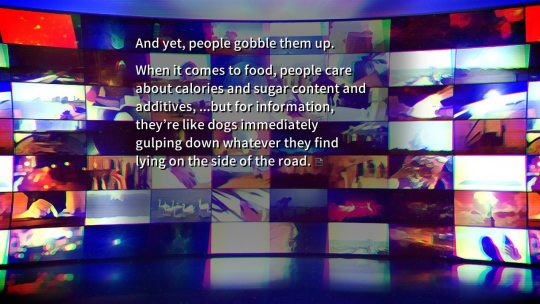
I think going in, and even starting to play it, I felt like maybe the game would abandon the WTC mystery game conventions. It ended up not doing that, because the game leaves you with far more questions than answers at the end. The A3W World (“after World War III”) is still trying to deal with political issues and social issues that existed prior to World War III. A global stalemate exists due to the military implementation of the Gauntlet weapon. Eventually things happen where different countries need to deal with a shortage of resources, territorial conflicts, etc which sets off a chain reaction to World War IV. However, the children who grew up in the A3W era, settled into new ideologies and views of how society currently works are at odds with what the older generation wants and requires of them. Along the way, they need to deal with other groups and conspiracies in order to maintain the Walls of Peace.
So in essence, R07 still crafts a mystery for readers to figure out, but it isn’t a murder mystery. It’s an international conspiracy mystery and I am more than okay with that. I think this chapter required a lot of worldbuilding to set that kind of story up and coming out of Phase 1, I understood why the first chapter wasn’t exactly like Umineko’s. I thought that it was handled well, despite some of the purple prose (but if you’ve played a R07 game before, you’re likely used to it). I also thought he really tried to introduce and incorporate themes including gender, generational differences, societal tiers, geopolitics disguised as sports events (possibly mirroring the 2020 Olympics in Japan), etc. as well as he could throughout the story through the game’s cast. Even if the game meanders a bit (and it definitely feels that way towards the start), when it actually starts to roll, I felt compelled to keep reading.
And truly, the game has an incredibly large cast of characters. The TIPS section handles introductions well, and while some cast members don’t have as much time in the spotlight as others, I can see them getting their time eventually in subsequent chapters. Clearly Phase 1 exists to focus more on the children from the Arctic Ocean Union (the “AOU”) as evidenced by the additional stories unlocked at the end of the game so hopefully other chapters have the same amount of character backstory for the other factions. I also genuinely enjoyed that the big international cast of characters allowed for many different types of designs with characters with different types of hairstyles and hair texture or characters wearing hijabs and still managed to make them retain adorableness or a sense of style. I do not recall seeing it as often in Japanese media and I’m very happy to see it here.
I think Ciconia Phase 1 is a very good start to this subseries’ planned four episodes and I hope to see more sociopolitical commentary. It feels as though R07 looked at everything happening in Japan and social media/how news is consumed and decided to write a four-part SFF series about it. I’m eagerly looking forward to the next chapter.
Bloodstained: Ritual of the Night
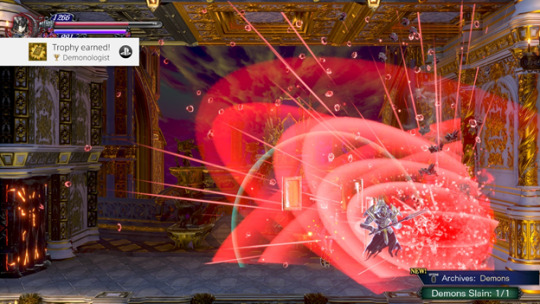
I backed Bloodstained when it got put on Kickstarter a few years ago. It was shipped to me at… possibly the worst time since Shadowbringers was coming out very shortly after. My fiancé and I played ours for a short bit, felt very positive about the game, then dropped it to play Shadowbringers. We didn’t return to it until maybe September/October? Both of us ended up getting our Platinum Trophies for it so we both played through everything the game had to offer.
Bloodstained is a good experience, but not without its issues. I played on PS4 and I’ve had a few outright crashes or some glitching into walls early enough that I couldn’t come out of them again due to not having the required skill to try to get out of it. I also felt like the game meandered or had a bit of padding in its earlier stages). Later on, you realise you have to put in the farming work to have a better and faster time not unlike its Igavania counterparts, but I did feel like the drop rates prior to actually working towards higher luck stats/drop shards were low enough almost to the point of unfair or deliberately wasting my time. I also felt as though there were too many weapon types; with adequate shard use and shard grinding eventually you can settle into one weapon type that suits your playstyle or eventually use the gun for everything when you get the special hat quest reward).
However, I’m speaking about this game as someone who platinumed it which requires a lot of farming and synthesis. As a player going through the main campaign, I think the maps are adequate. The backgrounds are very lovingly crafted, and the music is absolutely one of the best of the year. Boss design is also fun and rewarding, requiring the player to learn how all the different weapon types work, adequate backstepping and closing in, and boss patterns. If you suck, the game will show you that you suck very quickly and deliberately. Essentially towards the end, I felt as though Bloodstained tried very hard to cater to fans of the metroidvania style of game, and the classicvania style of game. I personally don’t think it completely succeeded but for a first time experience of trying to combine the two into one, it did its job with preparation for another game.
I also feel like some criticism was lobbed towards the game’s narrative for being told in library/book entries, and while I understand that (I actually couldn’t open all of the books for fear of my game crashing), I don’t think elaborate cutscenes and continuous dialogue would work well with this game’s flow. Bloodstained prioritizes gameplay elements and player exploration over anything else, and to be honest, I’d rather it happen that way than with long elaborate cutscenes. I also felt as though I got more out of the game because I’d played the 8-bit prequel as well.
Overall, Bloodstained is a passable experience. I’m glad I played it, and I’m glad I put the work in to try to make the game a better experience. I got what I wanted out of the game for as much as I backed it and I hope they try again with a similar formula because this is a very good first step.
The Touryst
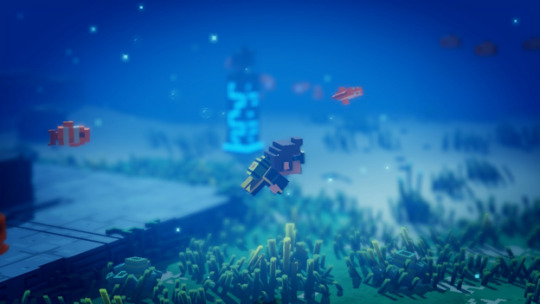
Sometimes when I see a game with voxel graphics, I feel pretty compelled to pick it up because it looks so darn lovingly rendered and it usually ends up being fun. The Touryst does a good job with its graphical style and visiting new islands is a complete delight because of it. It looks like a game with style, and performs super-well on the Switch. It’s also one of the freshest games I’ve played in a while.
Basically you’re playing a blocky dude with a moustache who just wants to have a good time but when he gets to TOWA Monument, he’s told he has to find monument cores to unlock the world’s secrets. And then you can do whatever you want. The different islands have their own little personalities: there’s an island called Fijy which is volcanic, there’s Ybiza with a bunch of dudes chilling on the beach and passed out on their chairs, there’s Santoryn which is just Greece, and a few other places that are essentially recreations of real-world places.
As you explore, there’s a lot of stuff to do. A variety of things to do. There are puzzles and mechanics that don’t necessarily overstay their welcome, you can play footy, you can play spelunker, you can take helicopter rides, you can take pictures, get stuff for a museum, surf, play rhythm games…. It’s your vacation, do what you want. It’s a little like Vegas. Unlike Vegas, you can use your ever-increasing money and diamonds to get new moves for your moustached character to reach new objects.
As a little game where you can do whatever you want little by little, and makes for a smooth experience, I’m glad I picked up the Touryst after asking another person what they thought of it. It has great puzzles, lots of stuff to do and explore and see, and ton of minigames for whatever mood you feel like you’re in. The game is fairly short, but I’m very glad the holiday doesn’t overstay its welcome.
A Short Hike
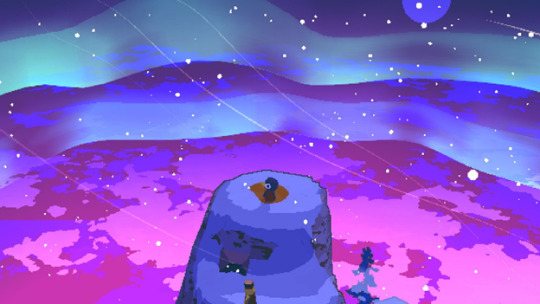
A Short Hike places you in the shoes of a bird who is utterly determined to walk to the top of Hawk Peak to get signal for her phone. I totally understand; sometimes you’ve gotta do what you gotta do.
But the game allows you to undertake that journey however you want to. You can go right away and finish up and get that darn signal. Or you can take your time and we’ll build that bridge when we get there. There are different types of terrains to explore if you opt to take the scenic route… and it’s rewarding to do so. You can find treasure, you can water a flower, you can talk to the Animal Crossing-esque characters to do some sidequests, you can do whatever you want.
I’m sorry to say that when the game introduced fishing, I spent a lot of my time doing that. Fishing ruins me. The completionist in me wanted to fish. But the whole thing is that you don’t have to do any of this. If you want to finish the game, you can absolutely positively focus on that and the game doesn’t pressure you for it.
And that’s one of the things I like about it. It’s just whatever about the whole ordeal. I don’t feel like I’m completely and utterly missing out if I don’t decide to do something. Even the task of getting Golden Feathers to progress is fine since you only need eight for it, and the game easily gives you enough rewards to get four or five before sidequests or exploration is factored in.
Sometimes you just need to take a walk and kind of think of nothing just to clear your head. And A Short Hike accomplishes that very well.
Worldend Syndrome
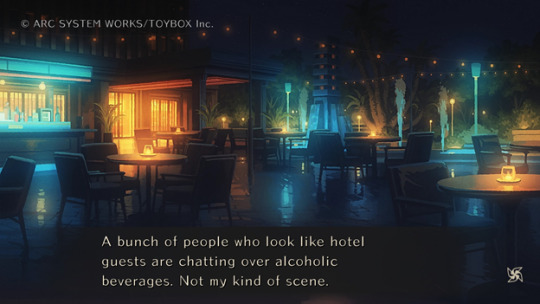
In my effort to try to find other games to play in 2019 because I’d fallen a little out of love with FFXIV, I realised that taking baby steps with visual novels and bite-sized games would be the best idea to try to get back into traditional games (particularly since I was, and am, still questioning whether I like games as a hobby or not). On a whim, I decided to download a boatload of visual novel demos one night and tried a bunch of them out. Worldend Syndrome’s demo didn’t exactly grab me until perhaps halfway through the demo when I a) realised that this demo was long af, and b) nothing appeared what it had seemed as I kept going through it and the characters were enjoyable.
So I decided to get the game and dragged my fiancé along for the ride. It’s one of those standard decision-making/pick which girl you want and go down her route VNs but it didn’t really feel skeezy or ecchi other than one particular point in each girl’s story where you get confessed to. You go through the VN as an unnamed protagonist who is visiting his cousin over the summer, and you and your friends get dragged into a school club whose focus revolves around folklore. The town the protagonist finds himself in is haunted by the Yomibito, spirits of the undead who look exactly like regular people but are eventually driven mad enough to kill.
One of the things that drew me to this visual novel was its assortment of animated backgrounds. They colourful and gorgeous. Every CG looks nice and coloured well, and the backgrounds for each area you visit are so beautiful and makes every single location easy to settle into. The cast is also surprisingly decent, where I expected to hate a few people but I ended up being okay with them because they were written well and weren’t as tropey as I had expected. I was also very pleased that the character that you were roleplaying as wasn’t skeezy when put into situations where he could have been, and that he treated the girls very well (though I won’t deny that there are some spots where behaviour was questionable but it doesn’t happen as often). Because the characters were written adequately enough, the game’s true ending route comes together very well and very naturally to a point where I could seriously believe that every character got along with one another to make sure the emotional impact of the mystery was satisfying.
In order to finish Worldend Syndrome, you have to do each route. A few characters’ routes don’t get unlocked until halfway through the game or even until the very end. The game also remembers everything you’ve done when it autosaves the system data on the world map, so if you need to reload a save to figure out someone’s schedule or if you mess up, it’s relatively easy to come back to something you’ve missed. I’ve played a lot of multiple route VNs before and Worldend Syndrome is easily one of the better VNs that allows the player to skip through to something they’ve missed or skip through previously-viewed text for another route.
As it is, Worldend Syndrome doesn’t really try to do anything spectacular, nor does it try to stand out like other visual novels of 2019 have (ie: Ciconia, presumably AI but I only tried the demo and I hated parts of the script, sorry). It does its job and tells its story which has a very good payoff in the end.
Judgement
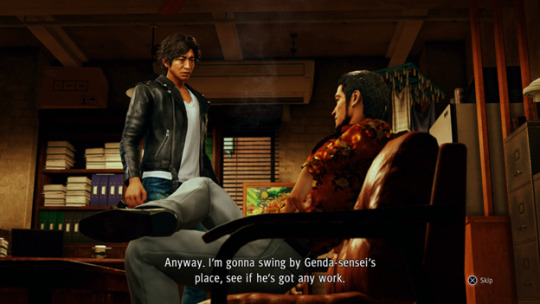
I bought my fiancé Judgement earlier this year, as I had retired from playing Ryu ga Gotoku after Dead Souls/Ishin, and he was still playing the series religiously. I watched him play through part of it and I felt compelled to get my own copy because the combat looked nice, and the characters were compelling enough that I felt comfortable picking it up.
Judgement follows former lawyer Takayuki Yagami who is now a detective. His tale is one of redemption and conspiracies, reminiscent of some Phoenix Wright games (which this game gives clever nods to when the protagonist is in the courtroom). Yagami is more serious and down-to-earth than Kiryu is so the tone of the game feels quite different than other RGG games (or at least the ones I’ve played).
It still feels like a regular RGG game where you’re still wandering through Kamurocho, you’re still getting into fights with randos and Yakuza dudes, you date girls, you go to buy food, you play minigames, etc. But it isn’t as big as a standard RGG game; because you stay only in the one area, the cast is smaller, you get a job board to get your sidequests from, and the story itself is fairly short and sweet. I actually prefer that as a lapsed RGG player since it’s easier to get back into the games this way.
Judgement, however, disappointed me just a little in how little you spend in the courtroom. You’re given opportunities to present evidence, do some suspect tailing, use your smartphone to catch a cheating husband, or use a drone to search for evidence. I felt like when you had to use the drone to search for evidence, it ruined the pacing a little. The tailing missions are also reminiscent of Assassin’s Creed, and no that isn’t a good thing! Due to this, I felt like Judgement was not necessarily a great detective game but it did a decent job of trying to mold the RGG experience to a different main character.
Yagami can… fight… for some reason so he can beat up whatever randos come up to him on the streets. He’s actually more acrobatic than I remember Kiryu being in previous RGG games. He can kick off objects, he’s hard to back into a corner, he can do wall-flips, etc. It’s also much easier to earn XP where it’s all in one bar so you can do whatever you want to fill it up like play darts and just put stuff into his lockpicking. As a lapsed fan, the streamlining feels okay. The streamlining for combat also feels good because if you fights go on too long, the popo can come for you and you’d get fined, so emphasis is on finishing fights cleanly and quickly.
Overall, as a lapsed RGG fan, the way Judgement looks and feels and wraps up its twists and turns was really exciting for me. It may not have as many things to do as other RGG games, but honestly I think being a leaner experience was better and thus didn’t make the game overstay its welcome. I also am eagerly awaiting RGG7 since I enjoyed the demo a lot and I think the new protagonist can carry the series the way Yagami carried Judgement.
Cadence of Hyrule
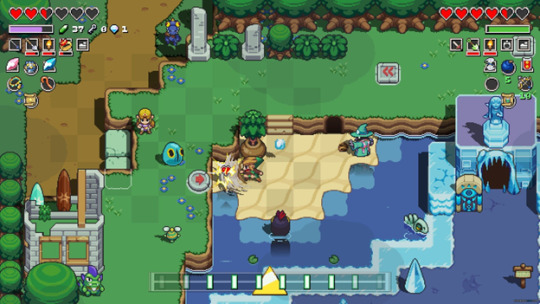
Sometimes, after my fiancé and I bought our Switch, I’d wake up, go brush my teeth, and return to bed just to see my fiancé awake and playing Cadence of Hyrule. I was perplexed as it’s been ages since he’d willingly played a Zelda game, and his hands are super-huge for the joycons so he doesn’t like using them much.
You can easily say that Cadence of Hyrule is just a Crypt of the Necrodancer reskin with Zelda stuff all over it, but feels pretty clever in that it uses stuff from roguelikes and a rhythm game and makes the A Link to the Past world feel incredibly fresh. Bosses, especially, feel very fresh. Enemies move according to the rhythm and have a unique pattern that’s easily memorized so you can fall into the rhythm and take advantage of. If you’ve played Necrodancer, you’ll probably feel at home in this aspect, especially since the maps are also randomised (which leads different playthroughs feeling fresh).
The Zelda feels comes from recreating tunes from older Zelda games in puzzles, the magnificent sprite art, the great Zelda remixes, a simple-enough story, and a standard set of things to find in each procedurally generated dungeon. You also find a variety of traditional items like the bow, the bombs, boomerang… and a spear? It’s a nice blend of Zelda and Necrodancer.
The caveat is that it takes a little getting used to, since you’re not exactly used to not being able to freely move in a Zelda game. But when you do get used to it, it feels good. Everything is pretty expendable and if you die, you don’t feel like you necessarily lose a lot since you can accrue it all easily enough again. It’s unpredictable and that random roguelike nature is something that makes the Zelda experience feel fresh.
Spirit Hunter: Death Mark
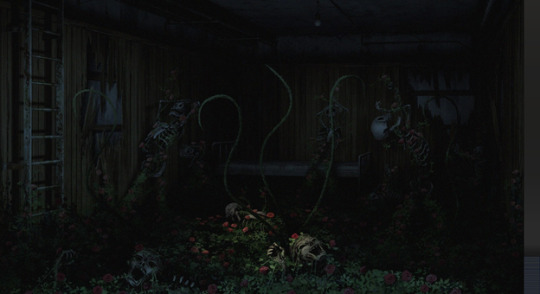
My fiancé and I were trying to find spooky games to play for Halloween that wouldn’t make me squeamish because despite my profession dealing with analysis of body parts and human body fluids, I can’t see that kind of stuff on TV or in games in a realistic sense. It grosses me out. At least when it’s in front of me, it’s already out and off someone’s body and in a fume hood/biosafety cabinet and I didn’t have to see how it happened. My fiancé picked up Spirit Hunter: Death Mark on a sale we went through it together.
Death Mark is a tale about horror-themed urban legends and a curse that needs to be broken. People get marked with a crimson bite mark in the game’s H City and they eventually develop amnesia and die. A group of people live and gather at a spirit medium’s mansion (who is dead upon arrival). The only hint to break the curse in this mansion is a little talking doll named Mary. The protagonist eventually goes through several mysteries in an effort to break his curse and stop others from dying.
Death Mark does some surprisingly well-crafted worldbuilding. Each spirit you deal with has a well-told backstory, sometimes especially ghoulish (particularly the bonus post-game episode, the first episode, and the one episode with the telephone booth). The game excels with psychological horror and the enemies involved in each boss battle assist in making the player feel that way as well. The backgrounds also lend well to this as while they are simplistic, the shading and colours used help to execute a sense of dread. One particular chapter harkens back to Japan’s Aokigahara, and the backgrounds used connect very well to that particular location so that it feels super-eerie.
Regardless, Death Mark relies a lot on its text to establish its atmosphere and as someone who reads stuff like R07 VNs and other regular VNs with a lot of text, I was okay with that. The localization was well-done, albeit with some issues that would have been caught in editing but overall it carried the story very well.
There are boss battles prior to the end of each chapter, where you must use each item you find in your exploration segments. You need to use specific items in a specific order (even with the correct party setup) in order to achieve a good ending for that particular chapter (and thus eventually the game). I thought this was an interesting mechanic and while it got a little tired depending on the spirit, it showcased how creepy some of them can be on your screen.
Unfortunately, Death Mark does not have a variety for its soundtrack and it’s almost disappointing that the same piano tunes and boss themes played repeatedly as I felt it detracted from the experience.
Otherwise, I felt like Death Mark was a short and sweet horror experience that played into urban legends and folklore experiences. I loved the little vignettes that eventually ramped up to a central story point. I hope the sequel is good when we get around to it.
Sekiro: Shadows Die Twice
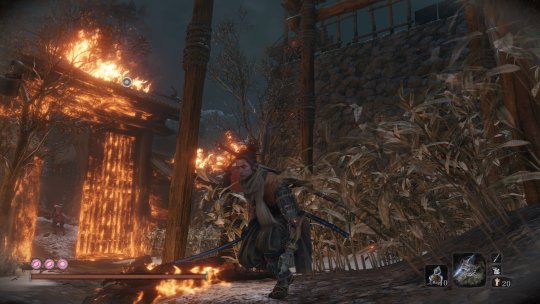
So my fiancé and I are doing this thing where we’ve started buying one copy of a game so we’d both own it together and go through it together. Sekiro and Man of Medan were two of those games this year.
Sekiro isn’t really like Souls. Eventually you’ll come to learn that very quickly when the game throws a boss at you and if you try to play like Souls, you’re not going to get the job done. It will show you that you never learned how to parry properly and you’re going to have to go back and learn it. Or if you didn’t grab a prosthetic that will make the job easier, you’re gonna have to do that too.
The game is interesting in that you aren’t exactly whittling down health bars all the time; you’re striking properly so you can overwhelm their posture bars, find an opening, and go in for the kill. Enemy health bars are essentially secondary to that posture bar. You have your own posture bar so you’ve got to learn how to parry properly. Sometimes you need to parry complete combos in order to deliver posture damage back to an enemy. It’s all about getting into the flow and rhythm of combat. And you must beat bosses in order for you to get a stat boost, so being able to beat a boss lies in your skill, and not necessarily your level/equipment.
Sekiro is Souls-like in its storytelling and worldbuilding. You can run around rooftops and areas to find secrets off the beaten path. You go back and forth between areas and speak to different NPCs to find out their backstories. The plot is also told via NPC conversations with the main characters. At first it’s a little dry but the story opens up eventually. It also has some great voiced NPCs for quests (one quest in particular had voicework that made me feel so sorry for the character that I was like “we need to get the proper item for this guy please don’t make him suffer”).
It feels rewarding to put in the work in order to beat the bosses, make it so you don’t resurrect as often to make people sick, and meet whatever standard Sekiro is throwing at you. It lets the player know that they’ve met that standard, and then throws another boss phase at them so you have to get even better.
Owl I’m looking at you.
Super Kirby Clash
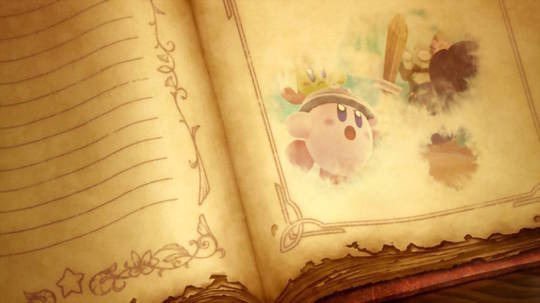
My fiancé and I bought a Switch together this year (which, outside of dinner and movies and clothes, etc. was one of our major purchases together). We downloaded a few demos to try the control scheme out, including Super Kirby Clash. I am aware that this game is probably old, but hey it’s still going and it’s still being supported and I’m catching up.
I’m probably putting it here due to bias, but I think It’s really cute and the hats are super-adorable. I love getting new hats and new weapons for my little Kirby. It’s fairly standard as far as a “mobile experience” is concerned and playing it a little when I have the time to and hacking away at it little by little is rewarding when I get a new hat or new gear. My fiancé and I played it in multiplayer as well, which felt a lot like Kirby’s Return to Dream Land.
It’s pretty inoffensive and I haven’t paid real-life money for anything in it, and I still feel like I’m progressing. So as a Kirby game with light RPG elements (ie: something I’ve wanted for years and years), it’s nice to finally see realised.
Monster Boy and the Cursed Kingdom

An artist I commission very often from convinced me to move this game further up in queue than I originally had it when we were talking about games we were playing after finishing Shadowbringers’ main campaign.
Monster Boy and the Cursed Kingdom is the spiritual successor inspired by Wonder Boy III, with the formula being modernized for a new era. It feels fast, and it looks soooooooo pretty. The tracks are bumpin’ too. It’s also a little tough but with every difficult section successfully platformed through, you feel really good about it.
You play as a plucky boy named Jin whose uncle is an insano who turns everyone in the kingdom into animals. After you experience sweet freedom as a human boy platforming across things easily for like 15 minutes, Jin’s uncle turns him into a pig. Whoops. From there the platforming gets a little harder and you need to learn how to manipulate different forms and different spells in order to get across various sections.
Different animal forms give you different skills. Pig form allows you to sniff out secrets literally, snake form lets you cling to walls and go through tiny passages, frog has a sticky tongue for swinging, and lion form lets you go through obstacles. You need to use these forms well to platform well enough to get through each area and finish the game. Being successful at platforming in this game feels good and fulfilling and satisfying. As you unlock more, platforming experiences get more and more complex with more obstacles put in your way, so in essence it feels like the opposite of a standard metroidvania. Playing both Bloodstained and this in one year felt like playing polar opposites. That said, the checkpointing in Monster Boy is really good. Game Atelier knew what they were doing.
The bosses by contrast were really easy and it’s nice to take the time to look at the art for each boss. All of the effects are also super-nice. Playing Monster Boy on a 4K TV is quite a visual treat for its boss sections, its town section, and its platforming sections. The colours are off-the-charts. Each animal sprite has its own set of unique animations: the piggy farts and looks like >_>, froggy looking at flies, etc. And the music is so good. If this game were a 2019 game I’d definitely put its soundtrack on my list, but it isn’t. It’s a nice blend of new and old stuff and it’s a delight to hear in-context as encouragement to keep going when you fail a platforming section.
Monster Boy and the Cursed Kingdom is a faithful representation and homage of the old Wonder Boy games. It’s filled with references and secrets and awesome art, and I’m glad to have been convinced to move it up my queue for this year.
Most Disappointing Game: Final Fantasy XIV: Shadowbringers

I love Final Fantasy XIV. It’s brought me closer to so many people in recent years and I’ve met so many more through it. Playing this game means so much to me and I want the best for it for years to come. It’s one of the reasons why I’m so critical about it. If I hated this game, I would stop playing and honestly, I wouldn’t care about its future. I will say this before getting started: I like Shadowbringers’ story so far (we aren’t going to be finished with its story until 5.3). I don’t think It’s necessarily as consistent as Heavensward, but I think Shadowbringers’ story is the most Final Fantasy story we’ve gotten since perhaps FF10. Truly, it’s the best we’ve seen for the series this decade.
I had a lot of hopes and hype for Shadowbringers. I hated Stormblood, for a myriad of reasons: social reasons, gameplay reasons, and narrative reasons. The direction Shadowbringers was going and all the trailers made it seem like it was going to be fresh and exciting and new. My fiancé and I (and a few others) swapped servers+data centers in advance of the expansion for a fresh start, to boot. I watched the Job Actions trailer over and over and tried to decide what I was going to eventually main and gear up because I didn’t really have a main in Stormblood due to the combat changes and how easy things became for certain things.
During a live letter, they mentioned that they’re changing how things work in battle, and that’s when I became a little cautious. I was hoping for the best leading up to release and then I saw the scholar/healer changes and got very worried. I changed mains in Stormblood because playing Scholar was freaking horrible at the start of Stormblood.
I eventually had to change mains at the start of Shadowbringers because I was not having fun playing Scholar. For people who didn’t bother to level a healer at all, the writing was on the wall for healers during Stormblood. Essentially, it introduced an age of healing where you barely ever used your GCDs to heal. You mostly used OGCDs and preplanned shields. 90% of the time if you wanted to be a good healer, you’d mostly DPS. I don’t think I’ve cast a GCD heal at all in SB and ShB content unless things were going super-wrong.
The healing changes introduced in Shadowbringers made us think that things were going to change, that things were going to be harder to heal. I had my doubts, however, because all fights are scripted and if they were to introduce a substantial change to incoming damage, they would have to make it so most people (casual, midcore, hardcore, less experienced newbies, experienced folks) would be used to It and could handle it. There was no way they were going to introduce more difficulty given that subscription numbers were increasing.
And so, healers during Shadowbringers got some damage skills taken away, but in their place, they were given more tools to heal with:
- White Mage came away from this as a very well-rounded healer at launch. It had its damage spells, it had a damage spell with a stun, it finally had long-standing and easily useable mitigation, it has substantial MP recovery, and it has a damage spell that rewards you for using three GCD heals to make up for damage lost. White Mage still making out like a bandit in 5.1.
- Scholar felt dramatically different and didn’t feel as solid as it used to be. It had most of its damage tools taken away, the usefulness of its fairy was decreased because let’s be honest it was super-overpowered, it got one of its fairies and its AoE esuna taken away, and it was given its PvP move to act as an AoE that doesn’t have another effect. I had to completely unlearn everything I did as scholar in the last 5-6 years in order to play current scholar. Current 5.1 scholar is overpowered as heck and I don’t feel as satisfied to play it in SB/ShB content.
- AST LOL. All the cards are balance. MP regen is what. Heals are what. Everything is just what. Other fun skills were removed. That said, I really like AST just because it feels like I have to work twice as hard to achieve the same effect the other healers bring to the table.
So eventually with all of these changes, we had assumed that healing was going to be harder. It wasn’t. It’s the same experience and all we’re doing is pressing one single button all the time. I barely have to heal in dungeons. I barely have to heal in raid unless my party members step in stupid. I just can’t bring myself to play healer every single day anymore, and I love healing in this game. Or I loved it back when it was more dynamic. I just press one button over and over and over and over and over and maybe sometimes another but I just press one button a lot. It’s really sad and it makes me miss old Cleric Stance of all things.
I like Shadowbringers’ story. I felt rewarded playing through it as someone who’s played the game for years and did everything when it was in-content. So for me, it was like a good reunion. There were a lot of points where the story dragged or felt rocky. I felt like the start of the 5.0 campaign was utterly boring and poorly paced. It picked up again, then slowed down again, then picked up again, then got REALLY BAD, then picked up again for a good finish. I don’t think it’s as consistent as Heavensward’s 3.0 campaign, but it was very solid and made up for the 4.0 campaign.
However, story is only 20% of the experience for me. The rest of the time, I need to actually play the game. I actually liked the levelling and crafting changes and new skills they brought in during 5.0 because leveling a crafter never felt easier. I felt like I still had to work hard but the payoff came quickly and my macros still worked as well as they did from during Stormblood. I also used my Stormblood melds and Stormblood equipment for the entire levelling experience and had to make concessions for some of my macros as time went on. I still had to know what my skills did, basically. The 5.1 crafting/gathering changes kind of make me want to craft less since I don’t feel like I have to solve a puzzle anymore and to be honest, everyone crafts now so you make far less money than you previously did. The desynth changes also made it so that most of my markets tanked since what’s the point of gathering half the materials when desynth makes those materials easily accessible. I’m not saying to gatekeep at all, but I feel like the experience should have been a little harder (ie: like the Ixali experience where you had to learn what your skills did or desynth shouldn’t be this easy to keep the market fairly balanced). My server is a crafting server so I am more impacted in general from this. That said, I don’t have anything to spend gil on so it doesn’t matter, I guess. I just feel far less inclined to participate in what was one of my favourite pastimes in XIV.
I mained Ninja which got killed in 5.0. I was already dealing with the servers moving from East Coast to West Coast, so adding a bunch of stuff to squeeze into your TA window in 10 seconds in Shadowbringers utterly killed the job for me. 5.1 Ninja throws me off as someone who played this game since the time Ninja was introduced, and I can’t make myself play it. The current opener is the Doton opener (which is something I didn’t like in SB at all) and I can’t always rely on my tank to bring the thing to my Doton. That, and making it so you do different things per every other or every third TA just makes the job a little unpalatable for me at 80. I’m one of those people who wants TA to go. I don’t like that Ninja’s become the TA bot in recent years. I can still do well with it. People still throw buffs at me, but I don’t find enjoyment in the job anymore and I hope we get a proper retool in 6.0.
I switched back to ranged. Thankfully Bard hasn’t changed as much since SB (though I still prefer HW Bard like a weirdo), and Dancer is one of those “I worked too damn long today and I just wanna do the mindless brainless rotation” jobs. I miss old Machinist oddly enough. It felt really good when you played it well and pulled off a decent wildfire. Now it’s a little easier and I don’t feel as fulfilled playing it. That said, it’s probably the best incarnation of the job since it’s sad little introduction in 3.0.
Even tanking is substantially easier and that’s a mostly good thing. It sucked going into a low level dungeon and having trouble keeping aggro due to the level syncing and your DPS’ stats. Now you can just turn your stance on and go to town without losing any damage potency like you used to. I kind of miss swapping stances after I’ve established aggro though, because you could tell the difference between a good tank and a bad/less practiced tank if they didn’t bother to swap stances in a fight. Tanks came out of this expansion very balanced, though. They might need some work here and there (warrior I’m looking at you), but overall, they came out the best out of the three roles.
Other than that, you have monks not knowing what they should be, samurai continuously getting buffed and nerfed, black mage staying consistent, red mage being lol, summoner getting changed to the point where now it’s overpowered, among other DPS changes. DPS overall don’t have as much synergy so you can take any job you want to into raid and it’ll get the job done. That said if you want to do as much damage as possible, you’re generally going to take the same few classes into the raid if you’re less educated about them. And I feel like the lack of synergy or utility between classes or even the loss of something like mana shift makes the whole experience a little boring. It’s very “f you, I got mine” or the onus is on the player for their own personal burdens and no one’s really helping each other unless you’re a dancer, trick attack bot, dragoon or bard.
I really hope the other pieces of content are substantial but what I’ve seen aren’t exactly what I had in mind. Boss refights with an alternate version is really neat but I didn’t really want that for this raid tier. I wanted something more original given what we had to deal with in Omega. I don’t really care for the Nier Automata crossover because, again, I wanted something original to the XIV lore and the First. I think doubling down on Blue Mage is a bad idea and while some folks like its party-based content now, I can’t bring myself to keep doing the content given that it’s clear they don’t know what to do with it (or didn’t know what to do with it). With one dungeon coming per patch I have to question what’s happening internally or what they’re working on. I know SE is weird internally and I really hope that the kind of stuff I’ve read in previous postmortem articles isn’t happening.
Either way, I’m really disappointed that I want to stop playing XIV so much when it’s the most popular among my friends and followers because it’s so dissatisfying to me and it’s the most accessible that it’s ever been. I hope things get better eventually but going by what I think they have in store and their old reliable formula, I don’t have hope. I’m tired of the formula and I feel like it needs a shakeup. Overall, I’ve been less happy playing FFXIV than I’ve ever been and it makes me feel really sad.
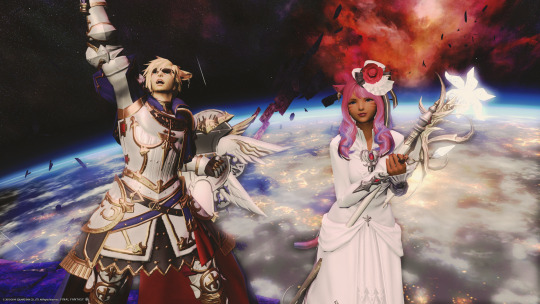
#goty 2019#ciconia when they cry#bloodstained#the touryst#a short hike#worldend syndrome#judgment#cadence of hyrule#spirit hunter death mark#sekiro#super kirby clash#shadowbringers
20 notes
·
View notes
Text
AGDQ 2021 VODs: The Best Speedruns You Have to See
https://ift.tt/eA8V8J
Despite not taking place in front of the live crowd that typically gives these speedrunning events their energy, AGDQ 2021 managed to raise $2,758,847 for the Prevent Cancer Foundation. It was yet another tremendous success for an event that is quickly becoming a must-watch showcase for a formerly niche section of gaming culture.
While we’re all waiting for better days when fans will be able to safely attend these events once more, it must be said that AGDQ 2021’s set-up did allow a greater variety of people to participate in the show remotely. As a result, this year’s event featured some of the absolute wildest runs you’ll ever see.
If you’re looking for the best of the best, though, then these are the AGDQ 2021 VODs that you need to watch.
cnx.cmd.push(function() { cnx({ playerId: "106e33c0-3911-473c-b599-b1426db57530", }).render("0270c398a82f44f49c23c16122516796"); });
Super Mario 64 (Blindfolded Run)
We’ve seen Super Mario 64 runs at these events countless times, but runner Bubzia makes this community classic feel fresh by daring to try to beat the game blindfolded.
The concept is crazy, but the actual run manages to exceed even lofty expectations. Bubzia is moments away from death at nearly every turn, yet he still attempts insane skips and jumps even when he only has one life remaining. It’s the kind of run that anyone can appreciate regardless of their level of interest in this scene.
Super Orb Bros.
Essentially a hacked version of Super Mario Bros. 3, Super Orb Bros. is a nightmarish collection of custom made levels designed to challenge (and punish) the best players in the world.
That makes it even more impressive that runner Mitchflowerpower is able to beat the game nearly 20 minutes under the estimated time and set a new world record in the process. World record runs are rare enough at these events, but you almost never see a runner destroy a record quite like this.
Beat Saber
This is a bit of a longer run (and watching someone play a VR game can be challenging), but the technical skill on display is undeniably impressive.
Much like Dance Dance Revolution, watching someone play Beat Saber forces you to appreciate both their reflexes and ability to withstand this kind of demanding high-level gameplay for such a long time. It’s the kind of run that makes you realize the extent of the time, effort, and raw skill that goes into these showcases.
Donkey Kong Country
It’s not a Games Done Quick event without a good speedrunning race, and one of AGDQ 2021’s best showcases had to be this incredible Donkey Kong Country race between Eazinn and DadLovesBeer.
Donkey Kong Country‘s surprising difficulty level always makes it a fun run, but what really sets this one apart is the fact that the two runners stay neck and neck nearly the entire time. This is about as good as this style of speedrunning gets.
Silent Hill 3
Some runs impress with records and gimmicks while others manage to simply be fun to watch or allow you to view a beloved game in a new way.
This Silent Hill 3 run is certainly an example of the latter attributes. A combination of excellent commentary, expert technique, and the quality of the game itself makes this run an easy watch for those who want to see a somewhat unusual speedrunning selection be destroyed by a truly talented player.
Diablo 3
It’s difficult to appreciate how cleanly Diablo 3 fits into the “easy to learn, tough to master” category until you see someone play the game at the highest level.
That’s definitely what you get from this run. It sees three top-tier players destroy the game so thoroughly that they even manage to beat the four-player world record time. Even better, they beat the record largely through raw skill and teamwork rather than a series of exploits and glitches.
Sonic Mania
Good commentary is an underrated element of a speedrun. The right host has the ability to both explain the process and elevate its entertainment value through the sheer force of their personality.
There are few better examples of the virtue of good commentary than this Sonic Mania run from Argick. Even more impressive than his ability to blaze through Sonic Mania at lightning speed is his ability to offer both color and technical commentary faster than Sonic can run. His announcing will leave you convinced that Sonic Mania runs would make for an entertaining addition to the Olympics or ESPN’s lineup.
Hades
Yes, Hades is best experienced at a pace that allows you to easily appreciate its subtle storytelling and worldbuilding, but there’s something to be said for watching someone who has mastered the game’s lightning-fast combat.
While runner Vorime’s luck during this run is borderline absurd, that good fortune does little to diminish their reflexes as well as their mastery of the game’s skills, weapons, and techniques. This is the kind of run that makes you come to terms with how much more you have to learn about Hades even if you think you’ve mastered it.
Celeste (Dance Pad Run)
Much like Hades, Celeste‘s undeniable style and surprising storytelling often lure people into a false sense of security designed to hide the title’s shocking difficulty. Celeste‘s toughest levels are designed to challenge even the most skilled platformer players.
So how does runner Peekingboo manage to beat those levels using nothing more than a DDR dance pad? To be honest, I’ve watched this run a few times now, and I still can’t quite comprehend what I’m seeing. Watch it for yourself to see if you can make sense of this level of skill and practice.
F.E.A.R.
F.E.A.R. is an all-time great horror game, but its largely linear nature would probably lead you to believe that the title wouldn’t be the subject of a particularly compelling speedrun. That is until you watch Maxylobes play this game in a manner most easily described as “unintended.”
While it’s not the “glitchiest” speed run you’ll ever see, this run does feature that perfect combination of mechanical mastery and creative exploitations. The result is a run that captures the essence of the entire speedrun scene.
Spider-Man: Shattered Dimensions
The award for the most surprising run of AGDQ 2021 has to go to runner Jaxler and the Nintendo DS version of Spider-Man: Shattered Dimensions.
As it turns out, the DS version of Shattered Dimensions features intense movement and combat mechanics that allow highly-skilled players to zip around its 2D maps at shocking speeds. The brilliance of those mechanics makes Jaxler’s lightning reflexes and nearly flawless technique easy to appreciate even if you’ve never played the game.
Left 4 Dead 2
Playing Left 4 Dead 2 by yourself kind of sucks. Not only do you miss out on the social experience that literally gives the game its name, but the title’s outdated A.I. typically leaves you struggling to overcome already overwhelming odds.
Those odds prove to be no problem for runner Waifuruns who manages to survive campaign scenarios that you’d think would be impossible for a solo player. He even tops the whole thing off with an equally impressive Last Stand run that comes down to the wire.
Pokemon Blue
There’s something beautiful about a glitched speedrun. It’s one thing to master the mechanics of a game, but it’s quite another to essentially destroy a game and rebuild it so that it adheres to your will.
That’s about what happens in Eddaket’s Pokemon Blue run. A series of RNG exploits and glitches allow the runner to seemingly breeze through the classic Nintendo game, but by his own admission, this kind of run requires you to master so many complex manipulation mechanics that it’s hard to argue against the idea this is the more difficult way to play the game.
Zelda: The Wand of Gamelon
The Zelda games made for the Phillips CD-i are infamously bad, but have you ever watched someone actually play one of them from start to finish?
If not, then Grumpmeister’s Wand of Gamelon run is the best (or at least quickest) way to experience one of them for yourself. It turns out that this game is absolutely as bad as you’re imagining, but the title’s broken mechanics and unwieldy controls actually make this one of the more oddly impressive runs of the entire event.
Mr. Bones
The “secret” about the Games Done Quick events is that some of the best runs happen in the small hours of the morning during the “Awful Block.” There’s something satisfying about watching players who have devoted arguably too much time to truly terrible games showcase them on a grand stage.
The nearly undisputed highlight of this year’s Awful Block was a truly obscure Sega Saturn game called Mr. Bones. The title’s bizarre gameplay is compelling enough, but it’s when you discover that Mr. Bones is packed with elaborate music sequences that you realize this may be one of gaming’s few “so bad, it’s good” entries.
The post AGDQ 2021 VODs: The Best Speedruns You Have to See appeared first on Den of Geek.
from Den of Geek https://ift.tt/3btmjdL
0 notes
Text
FMA Extended Media Recommendations - Red Tier (First place)
FMA actually has a lot of material outside of just the manga and anime. For lack of a better term, I call these works the FMA “extended media”, and I think they’re all sorely underappreciated. So, I decided to give my recommendations, and hopefully you might find something new to enjoy!
Because there are so many different works in so many different categories, instead of just doing a top 5 or top 10 list, I decided to divide them into tiers based on the four stages in the creation of the Philosopher’s Stone. Remember that these are all just my personal picks, and it’s all very subjective, so don’t feel bad or get angry if your favorite gets black tier! They’re all fantastic anyway.
A few notes first: I’m only ranking things I’ve actually seen/read/played, so for example, a few of the video games aren’t on here. I’m also not including the character song CDs (which I highly recommend). I’m also not including anything related to Conqueror of Shamballa, purely because of the amount of context required to enjoy those. My final notes are that some of these are in Japanese only, and also, please don’t ask me where to buy/watch things- any answer I give you is just going to be what I got off Google anyway, so might as well cut out the middleman, you know?
Anyway, without further ado, here’s the red tier!
The Ties That Bind (Novel)
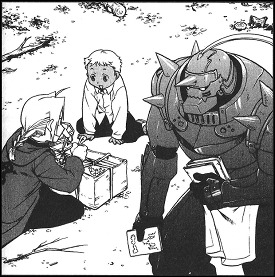
This is my absolute favorite of the light novels, by far. In this story, Ed and Al’s search for a rare book leads them to the town of Lambsear, where they meet a young boy named Kip. Kip is Ishvalan, and lives with his Amestrian adoptive parents, Shelley and Luon. Kip feels uncertain of his relationship with both his family and the local Ishvalan community, and as usual, some no-good alchemy is afoot.
This novel really puts an interesting spin on the effects of the Ishvalan War on a more personal level, and has some interesting discussions about community and what it means to be a family. The plot gets quite grim at some points, but there are more lighthearted moments, such as some time with the Curtises, and Ed’s apparent talent as a librarian.
Art Book 2 (Book)

Unfortunately I’ve never been able to find the first art book, but I do love this one. It’s a lovely book full of full-color images by Arakawa spanning from around the Dublith arc to... Just around the Briggs arc, I think..? I don’t really remember and I’m too lazy to go check, lol.
It includes not only manga cover art, but also character concept art, commemorative illustrations, things drawn for friends, and other pieces that might not otherwise be seen by the average western FMA fan. Each piece is also accompanied by Arakawa’s commentary, which ranges from insightful and thought-provoking to hilarious and nonsensical.
Curse of the Crimson Elixir (Game, Playstation 2)
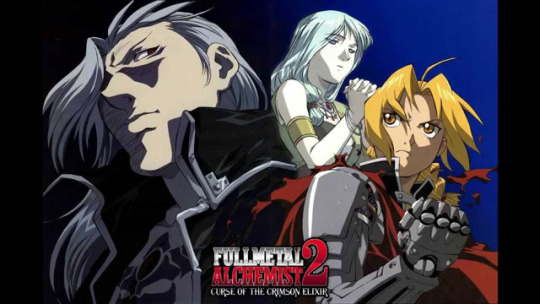
Although this is the second of the three FMA games released for the PS2, don’t let the number fool you; it has nothing to do with the first game. The graphics are greatly improved, though! Like the first game, Crimson Elixir is a story-based fighting game, with gameplay similar to the Kingdom Hearts series (although thankfully not as complicated). It’s also a great game if you’re a fan of Hawkeye, who’s with the Elrics throughout most of the main plot.
Curse of the Crimson Elixir starts out as a canon divergent AU, mostly based off the manga. Mysterious, mud-like creatures known as golems have been popping up everywhere, killing people and even an entire town. With a mysterious, ghostly woman named Elma begging for their help, and a reluctant and bitter old archaeologist named Arlen Glostner, Ed and Al are led to the ancient ruins of Siam-Sid, where a man named Jack Crowley has been using ancient alchemy to revive a lost civilization and try to resurrect his dead wife. It falls to Ed and Al to put a stop to Crowley’s wild scheme before it’s too late.
Sacred Star of Milos (Movie)
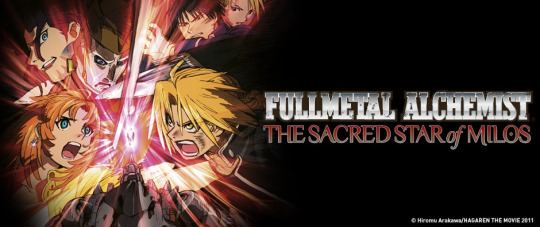
Those of you who are familiar with Conqueror of Shamballa might be inclined to assume that Milos is a sequel to Brotherhood,but it’s not. It’s intended to be another untold story from Ed and Al’s five-year journey, although like Crimson Elixir, it doesn’t really fit in anywhere on the timeline.
In this movie, Ed and Al travel to the western border for the first time in FMA history. A group of people known as Milosians live in a garbage-filled valley between Amestris and Creta; Once a great civilization of its own, after Milos was annexed by surrounding countries, the Milosians were forced to live in filth and poverty, provide slave labor for Amestris and Creta, and act as disposable pawns in international politics. The Elrics meet a bright young lady named Julia Crichton, who wants to use legendary Milosian alchemy to aid her people’s attempts to reclaim their country. But the promising technique that’s brought the Milosians so much hope is based around, you guessed it, human sacrifice. Oops! Good luck, Julia...
Sacred Star of Milos may have its faults... boy, does it have its faults... But regardless of its critical reception and its place in the FMA timeline, I still think it’s a very entertaining movie to watch. There’s a lot of fun action scenes and visually stunning sequences, and it has an interesting art style and a great soundtrack. It may not be another Arakawa-given masterpiece, but for FMA fans, I think it’s a fun and entertaining way to kill two hours.
Yet Another Man’s Battlefield (OVA)

This is part of a series of short, Brotherhood-based OVAs that give insight into the lives of various characters in the FMA universe. In this OVA, we get to see Roy and Hughes’ academy days, including how they met and became friends, and their friendship with an Ishvalan-Amestrian student named Heathcliffe Erbe.
But of course, this is the military, and it’s not all fun youthful school days. It greatly showcases the racism against Ishvalans, and also includes scenes from the Ishvalan war that show the subtleties of the war and what it was like for soldiers on both sides. I think this makes it really important, especially considering how much of Ishval was cut from Brotherhood. It’s not a happy OVA, but it’s one I highly recommend watching.
#FMA#FMA light novels#FMA OVAs#FMA video games#I'm gonna do the rest of these later because this took longer than expected and I have a music lesson in a few minutes lmao
48 notes
·
View notes